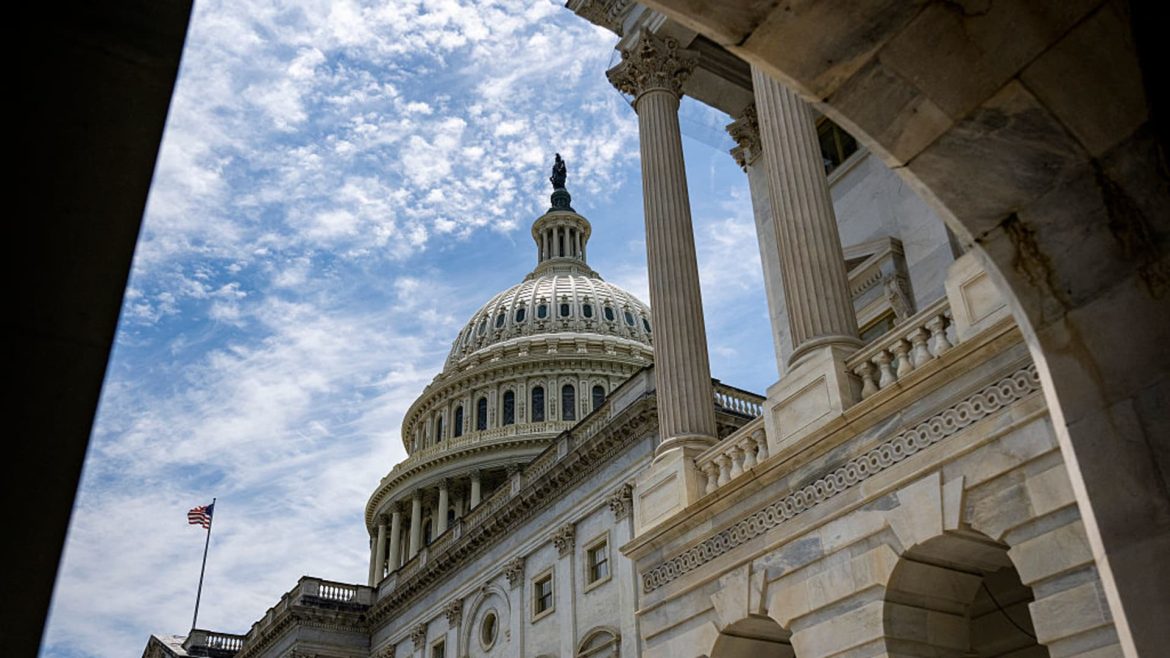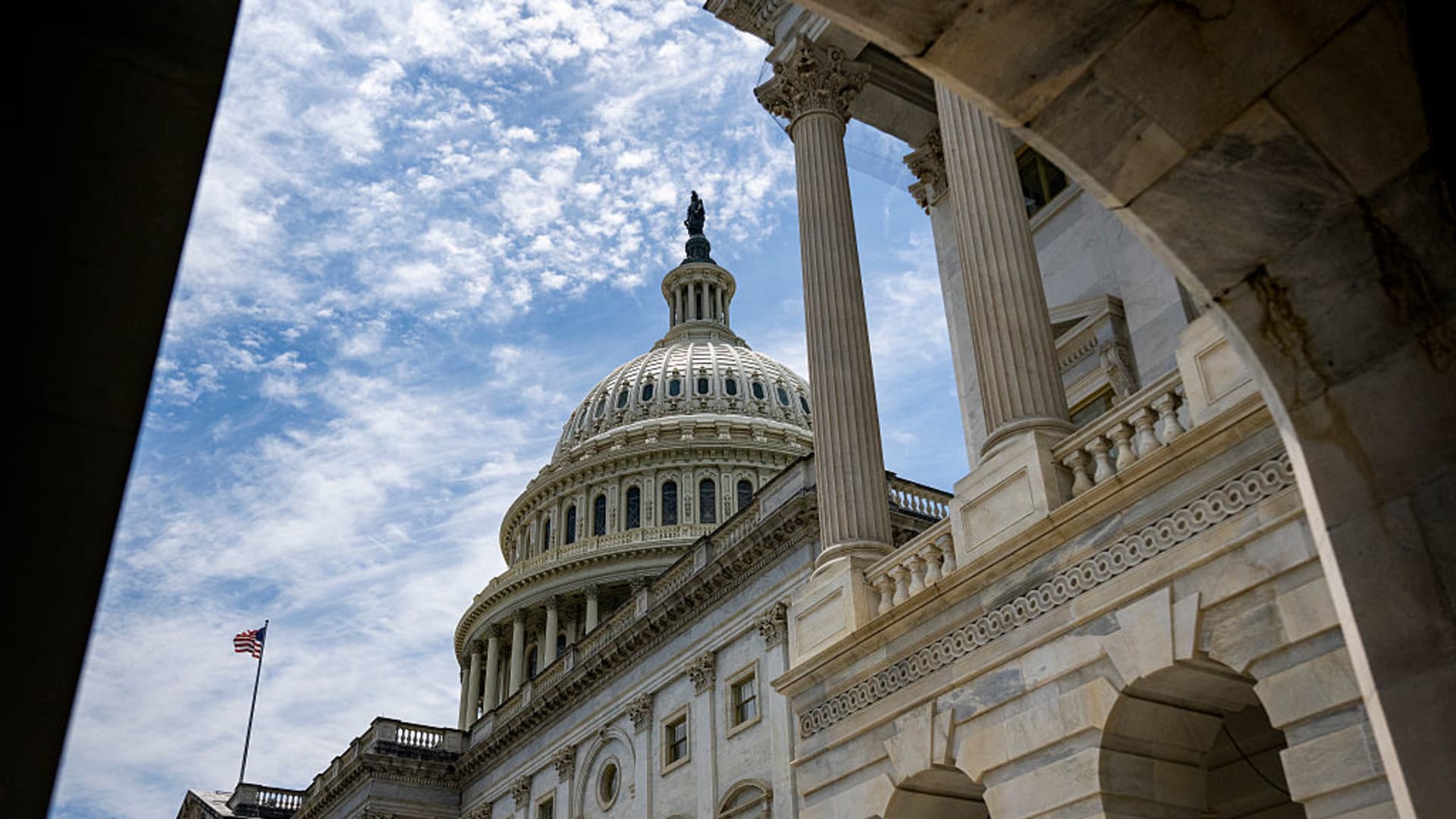The “Big, Beautiful Bill,” a legislative proposal championed by former President Donald Trump, has ignited intense debate across the political spectrum. This sweeping piece of legislation, currently under Senate consideration after passing the House, encompasses a wide array of policy changes, from tax cuts to immigration reforms. To fully grasp its implications, it is essential to dissect its core components, analyze its potential impact on various segments of society, and evaluate its long-term economic and social consequences.
The Tax Cuts: A Closer Look
The “Big, Beautiful Bill” is anchored in a series of tax cuts designed to extend and expand the provisions of the 2017 Tax Cuts and Jobs Act (TCJA). These tax cuts, initially set to expire, would become permanent under the new bill, significantly altering the nation’s tax landscape.
Extending the 2017 Tax Cuts
The bill’s most significant tax provision is the permanent extension of the 2017 tax cuts. These cuts, which primarily benefit high-income households and corporations, include maintaining the Trump-era personal income tax brackets. According to the Tax Policy Center, the top 1% of earners would see an average tax cut of $51,000, while the bottom 60% would receive an average cut of just $40. This disparity has sparked criticism from those concerned about the bill’s potential to exacerbate income inequality.
Increased Standard Deduction
The bill proposes to increase the standard deduction, offering immediate relief to many taxpayers. The standard deduction would increase by $1,000 for individuals, $1,500 for heads of households, and $2,000 for married couples. However, these increases are only slated to last through 2028, raising questions about their long-term impact. The nonpartisan Joint Committee on Taxation estimates that these increases would reduce federal revenue by $124 billion over the next decade.
Small Business Tax Breaks
The bill seeks to benefit small businesses by raising the threshold to qualify as a “small business” from $50 million to $75 million. Additionally, it increases the exclusion from $10 million to $15 million and introduces a new, tiered system for tax breaks for those selling businesses before five years. These provisions aim to stimulate economic growth by encouraging entrepreneurship and investment. However, critics argue that these breaks could disproportionately benefit larger businesses that can exploit loopholes in the system.
Eliminating Taxes on Tips and Overtime
A key campaign promise of Trump, the bill aims to eliminate taxes on tips and overtime wages. This provision intends to put more money directly into the pockets of workers who rely on these forms of income. According to the Economic Policy Institute, this change could benefit approximately 15 million workers, primarily in the service and hospitality industries. However, the long-term impact of this provision remains uncertain, as it could potentially lead to higher prices for consumers if businesses pass on the cost of the tax cut.
Reallocating Resources: Spending and Budgetary Changes
Beyond tax cuts, the “Big, Beautiful Bill” includes significant changes to government spending, reflecting a shift in priorities and impacting various sectors.
Defense and Border Security Boosts
The bill allocates substantial increases in spending for defense and border security. This aligns with the Trump administration’s focus on strengthening national defense and enhancing border enforcement. The bill proposes an additional $50 billion for defense spending and $25 billion for border security, including funding for the construction of a border wall. These increases have been met with both support and criticism, with proponents arguing that they are necessary for national security and critics warning of the potential for wasteful spending.
Social Safety Net Adjustments
To offset the costs of tax cuts and increased spending in other areas, the bill proposes cuts to social safety net programs, including Medicaid and the Supplemental Nutrition Assistance Program (SNAP). These cuts are intended to reduce government expenditures and control the national debt. However, they have raised concerns about the potential impact on vulnerable populations. According to the Center on Budget and Policy Priorities, the proposed cuts to SNAP could result in 1.5 million people losing benefits, including 500,000 children.
Impact on Healthcare
One of the more controversial aspects of the bill is its potential impact on healthcare. Proposed changes to Medicaid, in particular, could affect access to healthcare for low-income individuals and families. The bill proposes to convert Medicaid into a block grant program, giving states more flexibility in how they allocate funds. However, this change could also lead to reduced funding for the program, potentially resulting in fewer services and higher costs for beneficiaries. The Kaiser Family Foundation estimates that the proposed changes could result in 14 million people losing Medicaid coverage over the next decade.
The Human Element: Immigration and Deportation Policies
The “Big, Beautiful Bill” also addresses immigration, incorporating policies that could lead to significant changes in enforcement and deportation practices.
Increased Deportation Funding
The bill includes provisions to increase funding for deportation efforts. This could result in a greater number of deportations and stricter enforcement of immigration laws. The bill proposes an additional $10 billion for Immigration and Customs Enforcement (ICE) to carry out deportations. This increase has raised concerns about the potential for human rights abuses and the separation of families.
Border Security Measures
In addition to increased funding for border security, the bill may include measures aimed at enhancing border control and reducing illegal immigration. These measures could include the construction of additional barriers along the southern border, the deployment of more border patrol agents, and the implementation of new technologies for surveillance and detection. However, the effectiveness of these measures remains uncertain, and critics argue that they could be costly and ineffective in addressing the root causes of illegal immigration.
Winners and Losers: Who Benefits, Who Bears the Burden?
The sweeping nature of the “Big, Beautiful Bill” means that its impact will be felt differently across various segments of society. Analyzing who stands to gain and who may face challenges is crucial to understanding the bill’s overall implications.
High-Income Households and Corporations
These groups are expected to benefit the most from the bill’s tax cuts, particularly the extension of the 2017 TCJA provisions. Lower tax rates and business-friendly provisions could boost investment and economic growth. According to the Tax Policy Center, the top 1% of earners would see an average tax cut of $51,000, while the bottom 60% would receive an average cut of just $40. This disparity has sparked criticism from those concerned about the bill’s potential to exacerbate income inequality.
Low- and Middle-Income Americans
While some provisions, such as the increased standard deduction and the elimination of taxes on tips and overtime, could provide immediate relief to these groups, potential cuts to social safety net programs could offset these benefits. The proposed cuts to SNAP and Medicaid could result in fewer benefits for low-income individuals and families, potentially leading to increased hardship. The Center on Budget and Policy Priorities estimates that the proposed cuts to SNAP could result in 1.5 million people losing benefits, including 500,000 children.
States and Localities
The bill’s provisions related to state and local tax (SALT) deductions could have significant impacts on states and localities, particularly those with high state income taxes. The bill proposes to limit the SALT deduction to $10,000, which could result in higher taxes for residents of high-tax states. This change has raised concerns about the potential for increased tax burdens and reduced economic activity in these states.
Future Generations
The bill’s potential to increase the national debt raises concerns about the burden on future generations. Increased debt could lead to higher interest rates and reduced government investment in education, infrastructure, and other critical areas. The Congressional Budget Office (CBO) estimates that the bill could add $1.5 trillion to the national debt over the next decade, potentially leading to long-term economic consequences.
Economic Projections and Long-Term Effects
Understanding the potential economic effects of the “Big, Beautiful Bill” requires analyzing projections and considering long-term implications.
GDP Growth
Supporters of the bill argue that the tax cuts and business-friendly provisions could stimulate economic growth, leading to increased GDP. The Trump administration has claimed that the bill could boost GDP growth by as much as 3%. However, these projections have been met with skepticism by economists, who argue that the bill’s potential to increase the national debt could offset any short-term gains.
National Debt
Critics raise concerns about the bill’s potential to increase the national debt. The CBO estimates that the bill could add $1.5 trillion to the national debt over the next decade. This increase could lead to higher interest rates, reduced government investment, and long-term economic consequences. The nonpartisan Committee for a Responsible Federal Budget has warned that the bill’s potential to increase the national debt could undermine economic stability and growth.
Income Inequality
The bill’s distributional effects could exacerbate income inequality, with the wealthiest Americans benefiting the most from the tax cuts. According to the Tax Policy Center, the top 1% of earners would see an average tax cut of $51,000, while the bottom 60% would receive an average cut of just $40. This disparity has raised concerns about the bill’s potential to widen the gap between the rich and the poor, potentially leading to social and economic instability.
A Contentious Path Forward
As the “Big, Beautiful Bill” moves to the Senate, it faces a challenging path forward. Debates over its provisions, particularly those related to healthcare and social safety nets, are likely to be intense. The bill’s ultimate fate will depend on the ability of lawmakers to reach a consensus and address concerns about its potential impacts.
Political Divide
The bill has become a flashpoint in the ongoing political divide, with Republicans generally supporting the tax cuts and business-friendly provisions and Democrats raising concerns about the potential for increased inequality and reduced government investment. This divide has raised questions about the bill’s chances of passing the Senate, where a filibuster could be used to block its progress.
Public Opinion
Public opinion on the bill is also divided, with supporters arguing that it will boost economic growth and create jobs and critics warning of its potential to exacerbate inequality and undermine social safety nets. A recent poll by the Pew Research Center found that 45% of Americans support the bill, while 52% oppose it. This divide highlights the challenges facing lawmakers as they seek to address the concerns of their constituents.
A Nation Transformed?
The “Big, Beautiful Bill” represents a bold vision for the future of the United States. Its proponents argue that it will unleash economic growth, create jobs, and strengthen national security. Critics, however, warn of its potential to exacerbate income inequality, undermine social safety nets, and burden future generations with debt. As the bill moves through the legislative process, it is essential for policymakers and the public to carefully consider its potential impacts and ensure that it serves the best interests of all Americans. Whether it will live up to its “big, beautiful” moniker remains to be seen, but one thing is certain: this bill has the potential to reshape the American landscape in profound and lasting ways.





